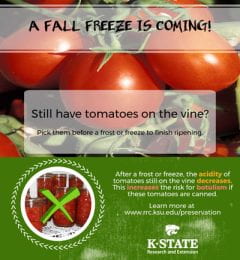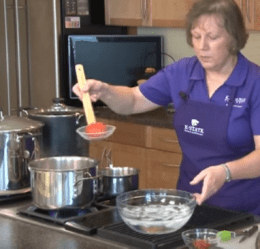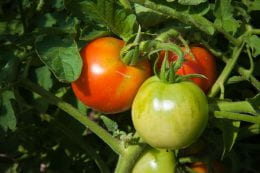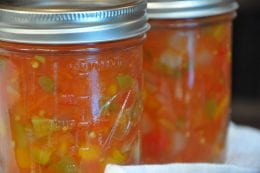 When preserving any food, use the best food possible for the safest results. This includes tomatoes. During the fall, many gardeners still have tomatoes on the vines. But once a frost or freeze happens, these tomatoes are not safe to preserve by canning.
When preserving any food, use the best food possible for the safest results. This includes tomatoes. During the fall, many gardeners still have tomatoes on the vines. But once a frost or freeze happens, these tomatoes are not safe to preserve by canning.
When tomatoes are left on the vine towards the end of the growing season, the pH increases above 4.6. This is the dividing point whether a food is a high acid or low acid food. When the pH is above 4.6, it is a low acid food. These tomatoes are also more susceptible to other microbial damage. Tomatoes that have signs of blight or other fungus related infestations have a higher pH making them a low acid food. All of these are not safe for canning.
For information on preserving tomatoes, see www.bookstore.ksre.ksu.edu/pubs/MF1185.PDF.




